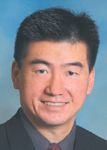- Acne
- Actinic Keratosis
- Aesthetics
- Alopecia
- Atopic Dermatitis
- Buy-and-Bill
- COVID-19
- Case-Based Roundtable
- Chronic Hand Eczema
- Chronic Spontaneous Urticaria
- Drug Watch
- Eczema
- General Dermatology
- Hidradenitis Suppurativa
- Melasma
- NP and PA
- Pediatric Dermatology
- Pigmentary Disorders
- Practice Management
- Precision Medicine and Biologics
- Prurigo Nodularis
- Psoriasis
- Psoriatic Arthritis
- Rare Disease
- Rosacea
- Skin Cancer
- Vitiligo
- Wound Care
Article
Imiquimod shows long-term success against AK
Researchers tracked a total of 146 patients (including 15 vehicle-treated) who had achieved complete clearance in four separate studies.

"The key finding is that the recurrence rate of AK in the imiquimod-treated area is extremely low," says Peter K. Lee, M.D., Ph.D., assistant professor of dermatology and director of dermatologic surgery, University of Minnesota.
"And the more frequently imiquimod is applied, there appears to be an increased efficacy or decrease in recurrence rate, though both treatment groups showed benefit."
"This is one of the few studies, if not the only study, showing very little recurrence of AK in the treated area for over a year. And among the patients who did have recurrences, the majority had only one lesion in the field. So even among patients with recurrences, only a small number of AKs showed up," Dr. Lee says.
Contributing factors
In attempting to explain what researchers considered a surprisingly low recurrence rate, Dr. Lee points out two major reasons.
"One might be that imiquimod has an immunologic role, and there might be some memory cells in the (treated) area that recognize damaged or transformed keratinocytes," he says. "It could also be that the imiquimod has an ability to reverse some of the photodamaged cells and replenish the area with more healthy keratinocytes."
Presently, the drug's long-term benefits have only been studied clinically, not biochemically or histopathologically, Dr. Lee says.
"But clinically, the benefits are clear. And most people who use imiquimod will say that the drug has benefits not only for AK, but it also causes the skin to look better. Our study hinted at that - that the quality and texture of the skin improved compared to surrounding skin," he says. Additionally, the study found no long-term safety issues.
Other benefits
Other findings included lower recurrence rates on scalp locations compared with the face. In the group of patients treated thrice weekly, 5 percent experienced recurrences on the scalp, and 40 percent on the face. The corresponding figures among the twice-weekly cohort were 31 percent and 44 percent.
Dr. Lee surmises, "It's possible that the face might have keratinocytes that are (located) down the hair folliculum, which might make AK more likely to repopulate the area than the scalp. Even though the scalp typically has hair, the patients we treat typically are bald. In those patients, the cells might just be on the surface with few follicular structures around the area.
"Concern for photodamage is another potential reason. Many people who are balding might wear hats for photoprotection, whereas patients treated for AKs on the face might not be wearing sunblock on a regular basis."
Skin type a factor
Skin type also appeared related to AK recurrence rates. In this regard, the proportion of fair-skinned (Fitzpatrick types I and II) patients in both treatment groups experienced higher recurrence rates than darker-skinned patients. Among patients treated three times weekly, 29 percent of fair-skinned patients experienced recurrences compared to 14 percent of darker-skinned patients. The corresponding figures among patients treated twice weekly were 50 percent and 33 percent.
Newsletter
Like what you’re reading? Subscribe to Dermatology Times for weekly updates on therapies, innovations, and real-world practice tips.











